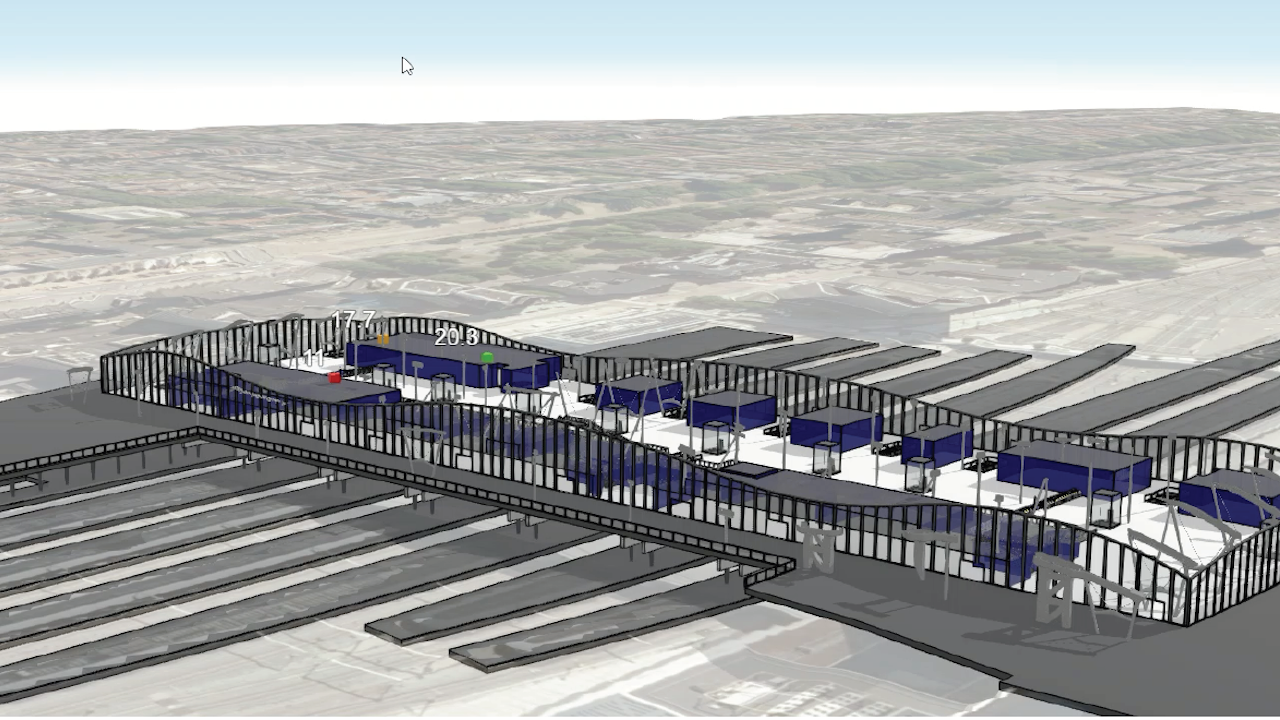Digital twin of Utrecht Central Station named best IoT project
NS and IT partner AMIS Conclusion have won the prestigious Industry Solutions Award 2023 for best 'smart buildings and smart cities' solution, with their 3D digital twin of Utrecht Central Station. The NS team received the award in Barcelona during the IoT Solutions World Congress. With 16,000 visitors worldwide, the largest IoT event.
February 16th, 2023 | News | By: AMIS Conclusion
Share

This award is a great international recognition for the innovative vision of NS Stations in collaboration with its IT partner AMIS Conclusion. AMIS Conclusion has played an essential role in activating the real-time data feed of this digital twin model.
A digital twin is a digital copy of reality - including all relationships - that changes in real time with the changes in the physical world. With this digital twin, NS processes the current information from digital assets (such as lifts, escalators, crowd meters and energy consumption) at the station in real time and projects it in real time into a digital 3D model of the station. This gives the station managers direct insight into the status of the station and allows them to intervene when needed. The model is also able to establish relationships between data-producing objects in the building, allowing extensive analyses and predictions to be made. In this way, the NS improves safety, prevents defects and improves passenger comfort.
What is a digital twin and what can you do with it?
Digital lead Jean Keultjes of NS Stations IT: "The digital twin was created by collecting and processing 20 billion fine-grained lidar data points and 540 high-resolution drone images into a 3D model, and visualizing information in it. This model is provided with real-time telemetry data from elevators, escalators and a wide range of Lora sensors. Of course, all with the highest requirements for security and privacy of this data. We have used the expertise of AMIS Conclusion to unlock the telemetry data. They have realized the logic and the platform for us to retrieve the real-time data and process it in the model."
Jean continues: "The model allows us to easily map the current structure of the building in detail, including the real-time use of objects in the building. This includes elevators and escalators. This is now possible without having to consult a huge number of individual sensors via separate dashboards. That is very valuable to us." Robbrecht van Amerongen, Head of IoT at AMIS Conclusion: "The model can not only identify equipment defects, it is also possible to simulate the impact of outages through different scenarios. This makes it possible to make better decisions about passenger walking routes, impact on safety, maintenance and sustainability."

What does a digital twin yield and what are the future possibilities?
Jean: "The digital twin model brings a drastic improvement in the perception of station managers about what happens in a station during the day. We are now also able to plan the maintenance of elevators and escalators in such a way that the impact on passenger flows is minimal. In the future, we will gain insight into energy waste and peak load, which will help us reduce our CO₂ footprint. And with the help of audio analysis, we can automatically detect undesirable behaviour and intervene more quickly in panic situations.
What effect does the implementation have on environmental, social or economic sustainability?
Robbrecht: "The digital twin contributes to the overall experience of the people who visit the station building. Through real-time insight and historical data, we can plan maintenance more effectively and reduce the energy consumption of the equipment." Jean adds: "And by having this data projected into an accurate and recent 3D model, we have much less discussion about the meaning of this data in relation to the structure of the building. In short, this contributes to sustainability, cost savings and a better customer experience."
What are notable results resulting from the station's digital twin?
Jean: "The core of the digital twin is remote insight into the current state of affairs of a station. First, the digital twin model of the station provides an integrated view of the entire building. This means that our employees no longer have to look into multiple systems to form an image of what is currently going on. This model then helps us to take very effective measures to steer towards achieving the objectives of the Paris 2030 treaty, to which NS has committed itself.
On the consumer side, the digital twin model contributes to improving the station experience through increased availability of essential components such as escalators and elevators, as we have focused on usage-based maintenance. In the coming years, we will focus on building new use cases that combine the building's features, the use of real-time equipment, and passenger flow to reduce costs and improve the passenger experience. At its core, the possibilities are endless!"
More info
For more information, read the press release of IoT Solutions World Congress or contact Robbrecht van Amerongen, Head of Internet of Things at AMIS Conclusion.

Robbrecht van Amerongen